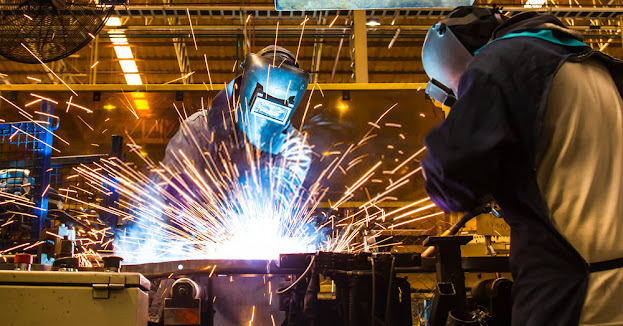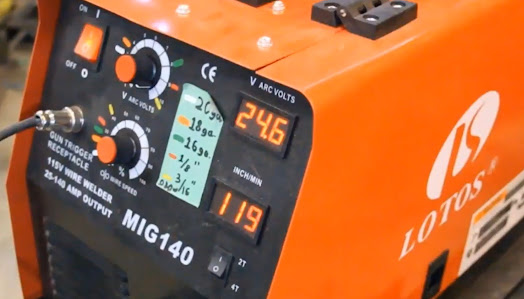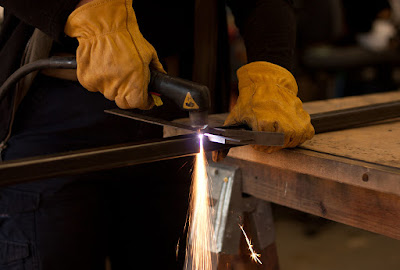How to weld metal for beginners

If you want to learn about welding, how to weld, then you're in the right spot! I'm going to show you everything you need to know to get started welding with minimal upfront costs, even if you're a complete beginner!
Welding two metal pieces together form a permanent bond in which the metals are heated to a melting point, mixed, and then cooled, creating a single object. This type of bond is more vital than other bonds, such as soldering, which can be reversed.
MIG Welding
New welders just can learning how to weld should start with inert metal gas (MIG) welding, also known as gas metal arc welding (GMAW). MIG its a type of electric arc welding, which relies on creating an electrical circuit that runs through the objects to be welded together and a welding wire, which acts as an electrode.
TIG Welding
Tungsten inert gas (TIG) welding requires more skill and take longer than MIG welding, but it offers more precision. TIG, also known as gas tungsten arc welding (GTAW), can be used to weld aluminum and alloys, such as 4130 chrome-moly.
TIG welding is similar to MIG, but instead of a consumable wire, the electrode used is a tungsten metal rod inside the welding gun. The welder holds the gun in one hand while feeding a filler rod in the other hand. As the arc creates a melted puddle from the two workpieces, the melt puddle's heat melts the filler rod, so that all these three mix together in the puddle. Like MIG welding, TIG welding guns disperse a shielding gas to protect the new weld.
Flux-Cored Welding
The third type of welding, called flux-cored arc welding (FCAW), uses a continuously fed electrode tube in place of the wire used for MIG welding. The tube is metal on the outside, with a flux agent in the core. As the flux melts during welding action, it creates a liquid slag and gas that shields the weld from contaminants. This provides better protection for the weld than the shield gas used in MIG welding, significantly where strong breezes might disperse the gas, but it also results in more spatter, which must be cleaned up afterward.
Stick Welding
Otherwise known as shielded metal arc welding (SMAW), stick welding is a two-handed method, like TIG. Stick welding uses a metal filler rod, or stick, coated with flux. As the stick material melts in the heat, the flux coating also melts, creating both a gas and a liquid slag to shield the weld from oxidation. As with FCAW, shield gas does not have to be dispensed during the welding process, but the leftover slag leaves a mess requiring clean up using a sander or solvents.
Welding Equipment
Along with the proper machine, the next critical piece of equipment required is a welding helmet to protect the face, especially the eyes, from the electric arc's extreme heat and bright light. The latest technology has made possible auto-darkening helmets with vision screens that instantly adjust to the light level so that the welder has constant visual input.
Welding Materials
Other useful equipment includes magnets and clamps to hold metal objects in place during welding, adjustable welding tables, and work stands, and fiberglass welding blankets to prevent the spread of sparks.
Weld-on tabs in various sizes and shapes create flanges, holes, handles, and other mechanical parts when welded to a pipe or other metal objects.
Welding Methods
Each welder develops his or her preferred welding techniques. One of the most commonly used is nicknamed "stacking dimes," which ends up looking like a string of round coins overlapping along the weld's length.
As the welding arc liquefies a small pool of metal, the welder pushes the melt pool ahead with the electrode, using a fluid motion similar to writing a series of the letter "e" in cursive. Alternative motions may be described as "figure 8," or "half-moon." The key to each type of movement is to ensure that the electrode pushes the melt pool back and forth evenly between the two workpieces so that both are fully welded.
Material Differences
Welding different types of metal vary, depending on the different physical characteristics of each. For example, stainless steel doesn't transfer heat as well as other metals, so it's easy to build up too much heat in the weld area, causing the steel to warp and reducing its corrosion resistance. To control the heat, reduce the current on the welding machine and speed up the torch's movement.
Compared with all types of steel, aluminum has a much higher thermal conductivity and a lower melting point. It is also highly reactive to air, creating a hard oxidation layer on the surface. Because this oxidation layer melts at a much higher temperature than the aluminum underneath, it must be removed with a wire brush or chemical solvent before the welding begins.
Here are some advantages to MIG welding:
1.The ability to join a wide range of metals and thicknesses
2. All-position welding capability
3, A good weld bead
4. A minimum of weld splatter
5. Easy to learn
Here are some disadvantages of MIG welding:
MIG welding can only be used on thin to medium thick metals
The use of an inert gas makes this type of welding less portable than arc welding, which requires no external source of shielding gas.
Produces a somewhat sloppier and less controlled weld as compared to TIG (Tungsten Inert Gas Welding)
What are the right settings?
If you are experiencing holes in your workpiece, then your power is turned up too high, and you are melting through your welds.
If your welds are forming in spurts, your wire speed or power settings are too low. The gun is feeding a bunch of wire out of the tip, it's then making contact, and then melting and splattering without forming a proper weld.
You'll know when you have settings right because your welds will start looking nice and smooth. You can also tell a fair amount about the quality of the weld by the way it sounds. You want to hear continuous sparking, almost like a bumblebee on steroids.






Comments
Post a Comment